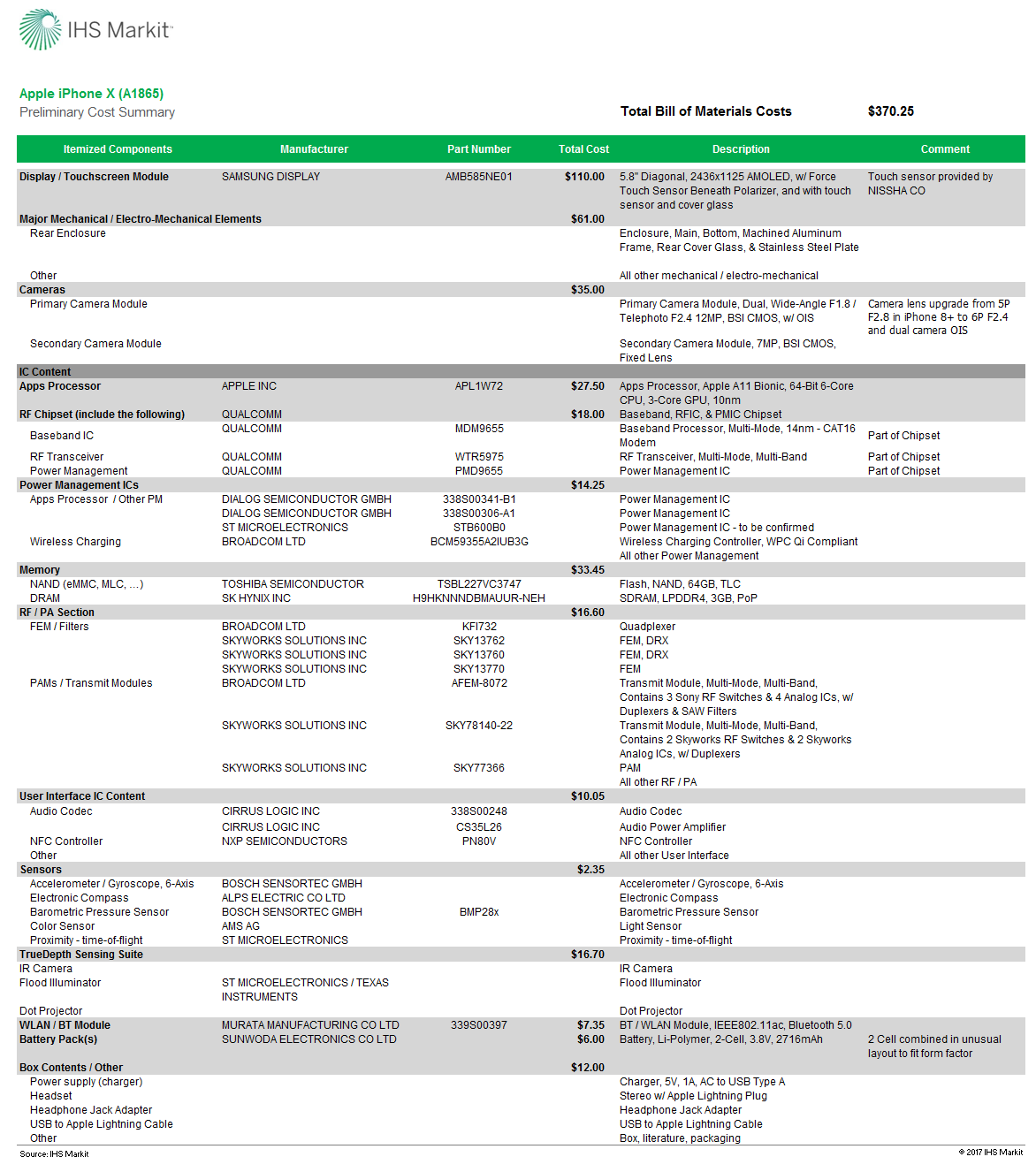 iPhone X
iPhone XIHS Markit engineers
evaluated the components from which the iPhone X is assembled. According to the examination, in the A1865 model with 64 gigabytes of NAND memory, all components cost $ 370.25.
The iPhone X is the most expensive iPhone in history and the most expensive smartphone on the market. With an initial price of $ 999, it is $ 50 more expensive than the previous most expensive 8 Plus model with 256 GB of memory.
Assembled from components for $ 370.25 smartphone is priced at $ 999. This is + 170%. For comparison, the model Samsung Galaxy S8 with 64 GB of NAND memory with the cost of accessories of $ 302 retails for about $ 720 (+ 138%).
Andrew Rassweiler, senior director of the benchmarking service at IHS Markit, says that when it reaches a thousand dollars, the iPhone X "takes the smartphone industry to a completely new price range." The fact is that usually Apple uses a stepped pricing strategy, giving users the choice between different screen sizes and memory sizes and different prices. In the case of the iPhone X, another strategy is chosen. It seems that a new starting point has been set up, which opens the way for more expensive premium models, analysts say.
Rasweiler notes that design has become a major innovation in the iPhone X. In terms of design, the most significant step forward has been made since the debut of the original iPhone in 2007. At the same time, the technical architecture of the iPhone X is no different from the iPhone 8 Plus. Higher component cost is associated with a better quality screen and a set of TrueDepth sensors.
IHS Markit MEMS and Sensor Specialist Jeremy Bouchard (Jérémie Bouchaud) notes that the “innovative” Face ID technology provided by the TrueDepth sensor set works along the same lines as the old Microsoft Kinect system. TrueDepth is a complex set of components from different suppliers. For example, infrared cameras are supplied by Sony and Foxconn, while specialized chips are supplied by ST Microelectronics. The flood illuminator is an infrared emitter produced by Texas Instruments, which is installed on top of an ASIC with a SPAD detector (single photon avalanche diode) from ST Microelectronics. Finisar and Philips produce point systems for the system. In general, components for the entire TrueDepth design cost $ 16.70.
The 5.85-inch AMOLED display with a resolution of 2436 × 1125 pixels from Samsung, together with a protective glass and a Force Touch sensor, was priced at $ 110. At the end of 2017, it is predicted that the Samsung Display division will supply Apple with 67 million flexible AMOLED panels with such non-standard features.
The cost of all the components of the iPhone X